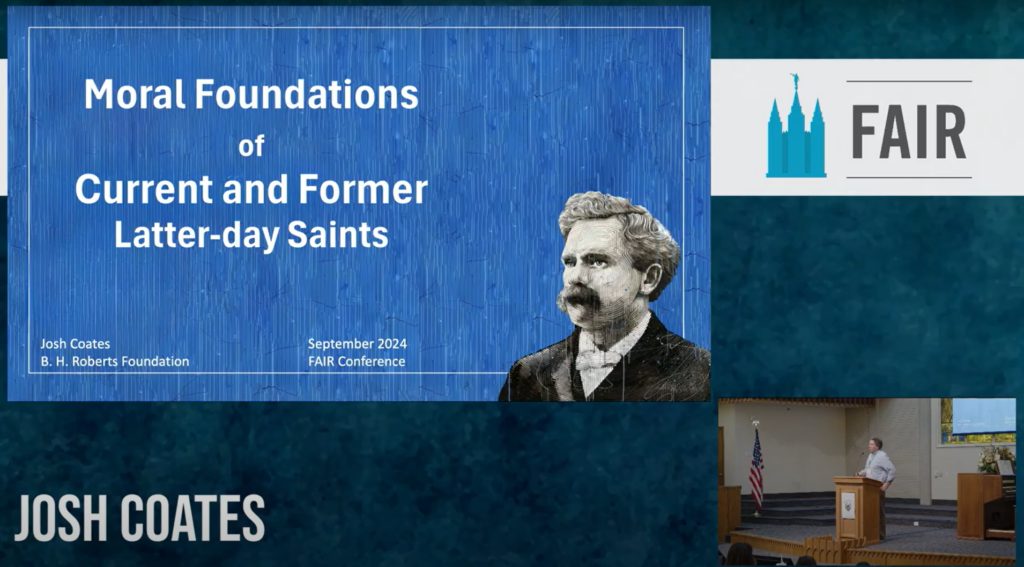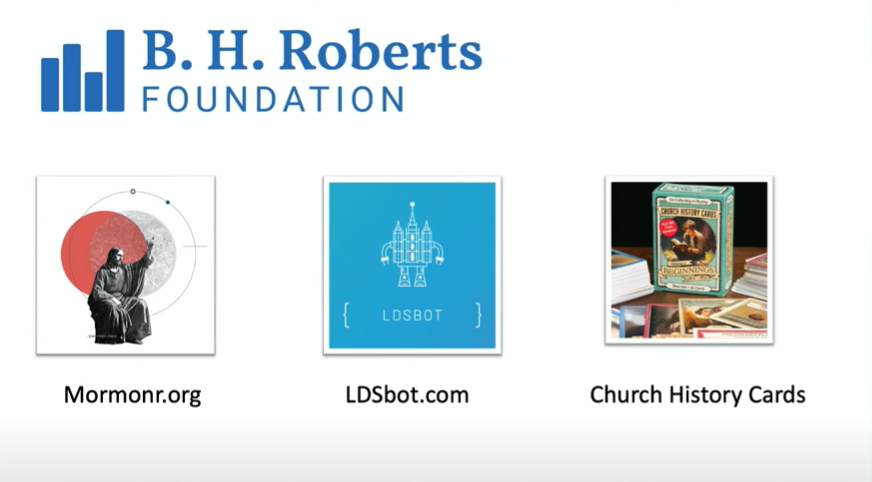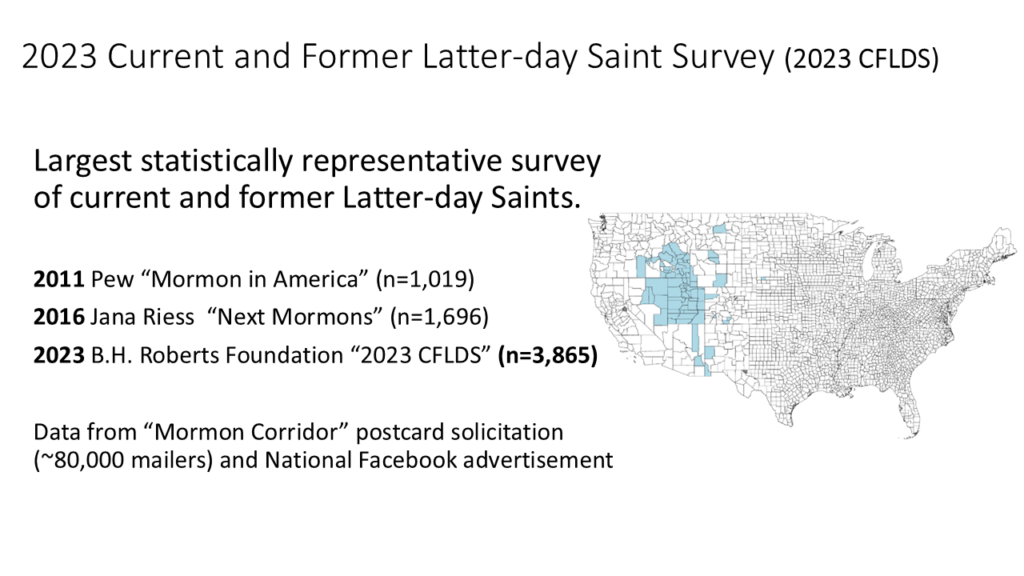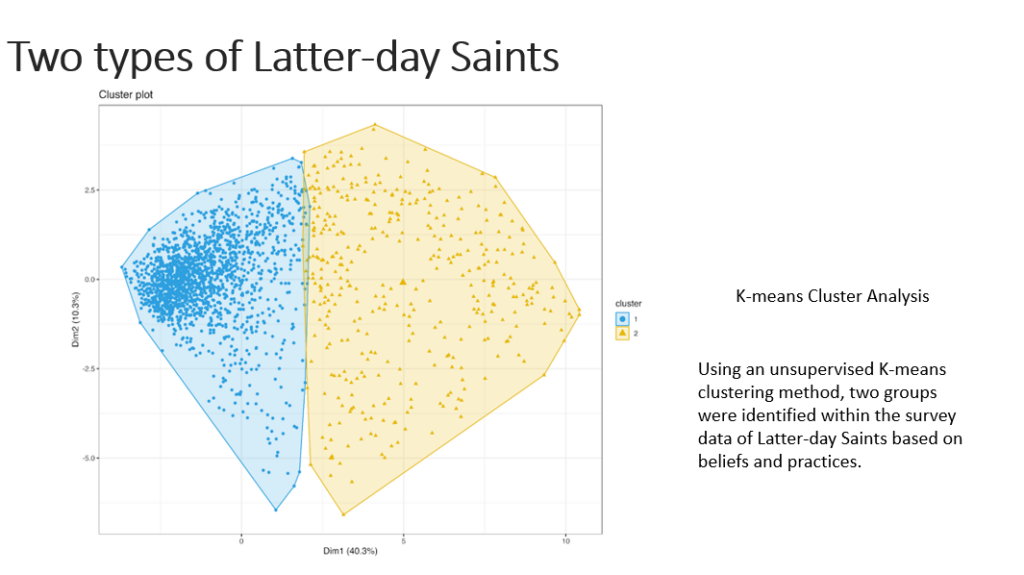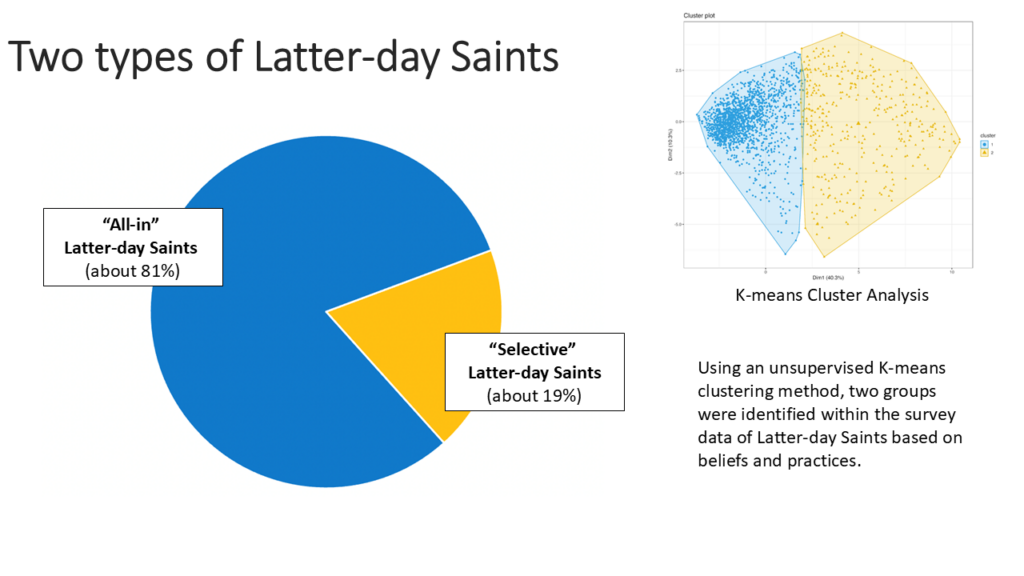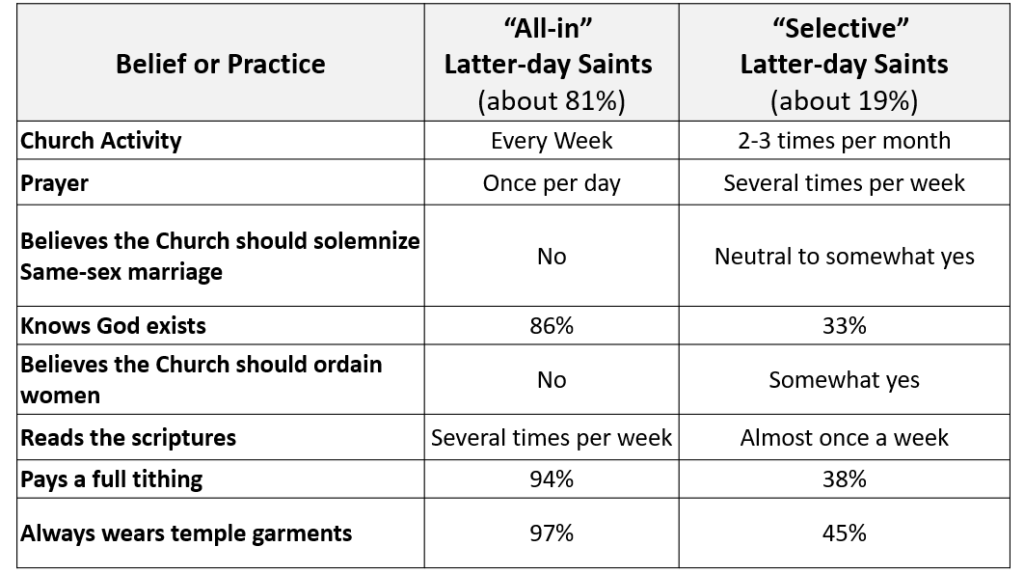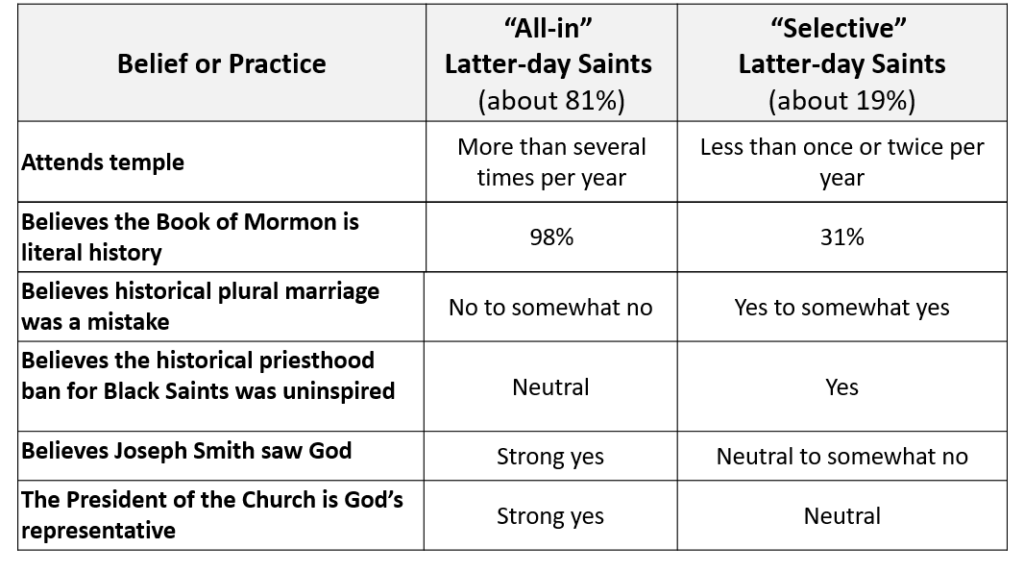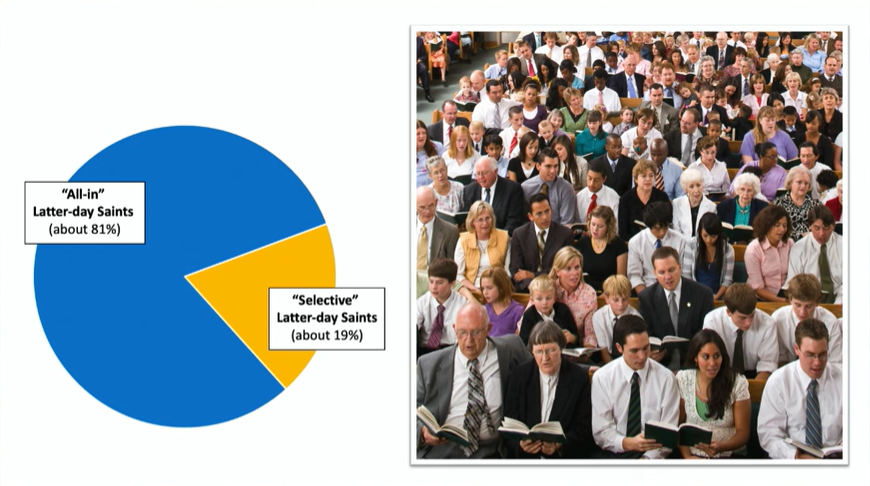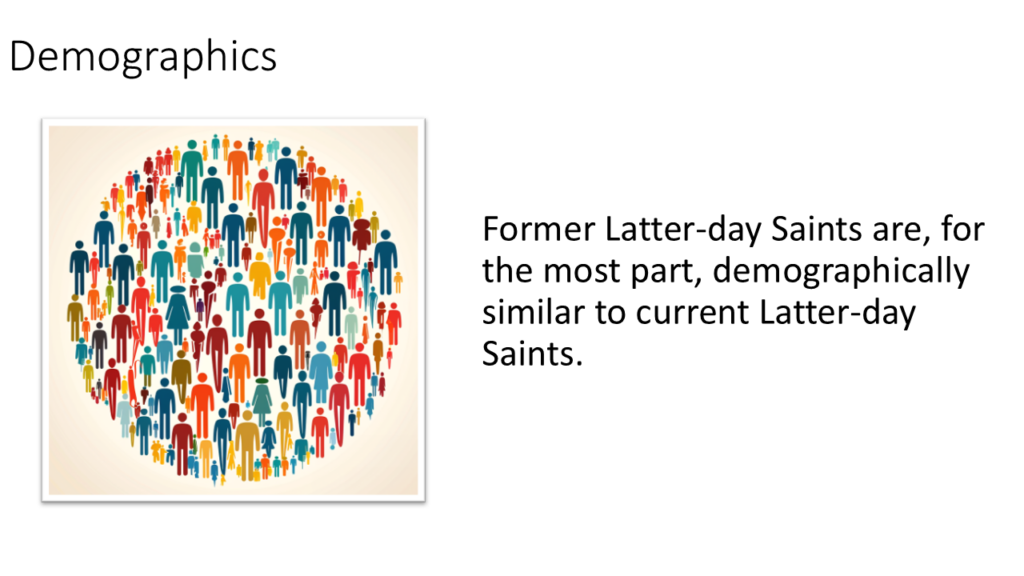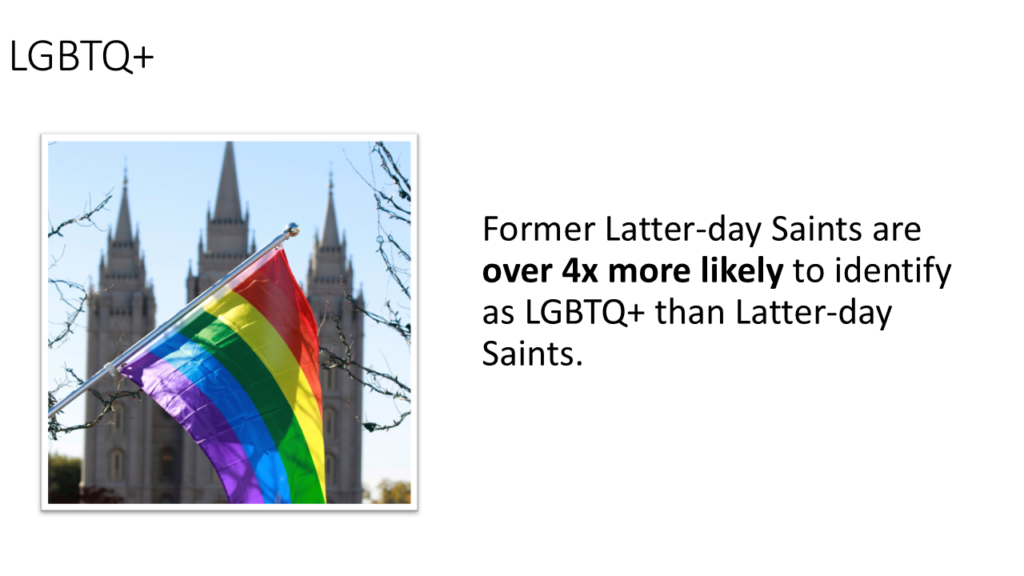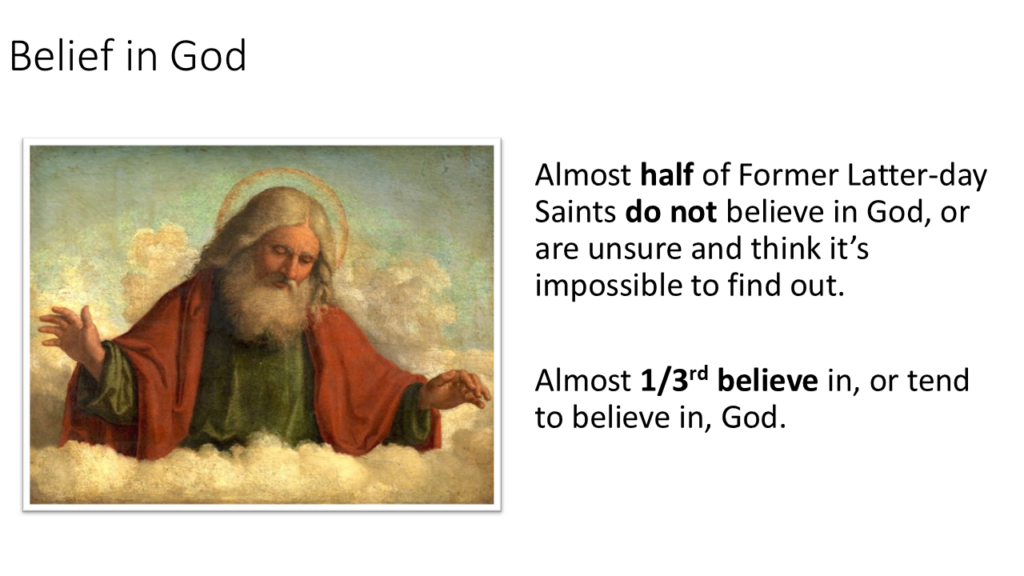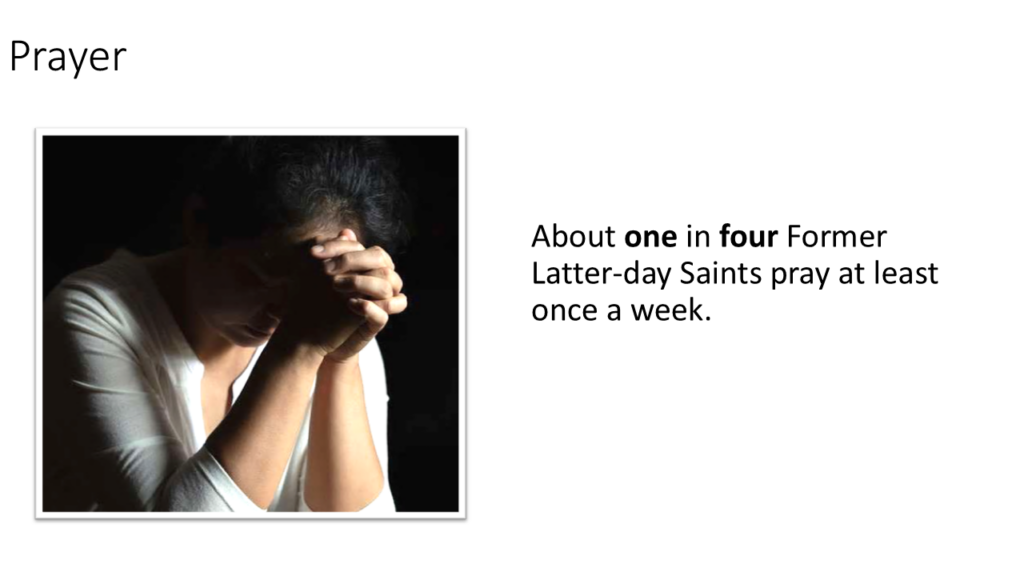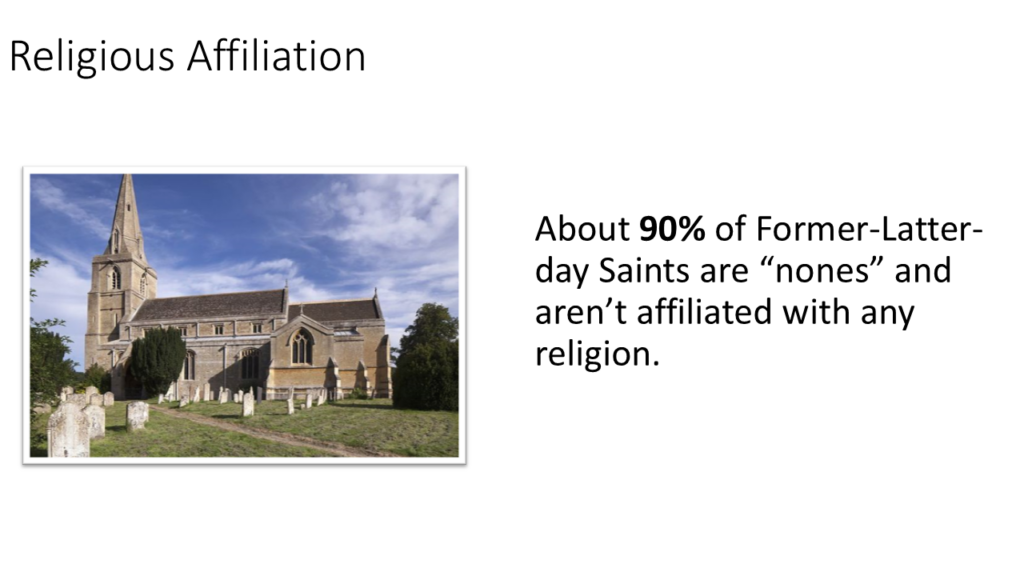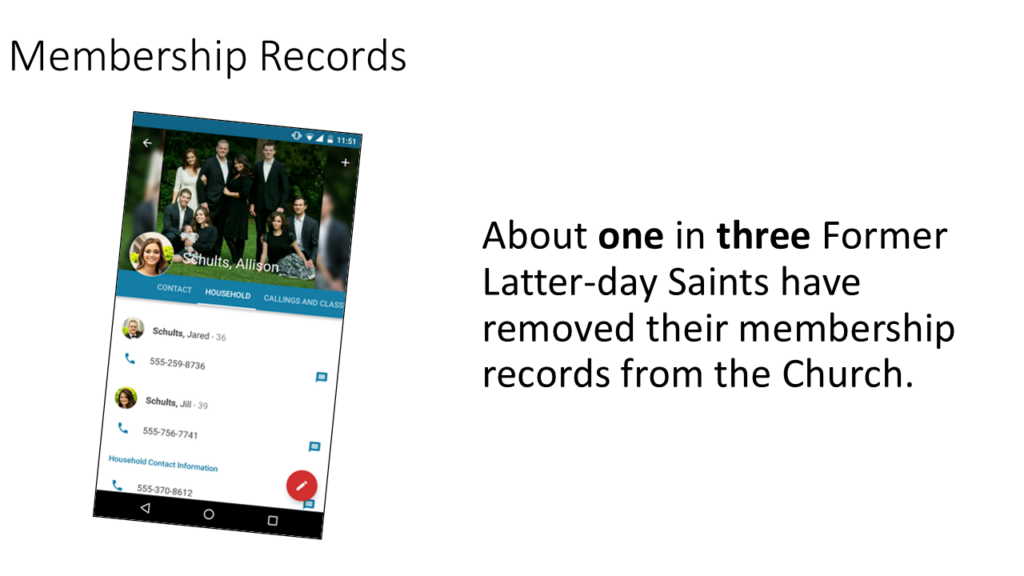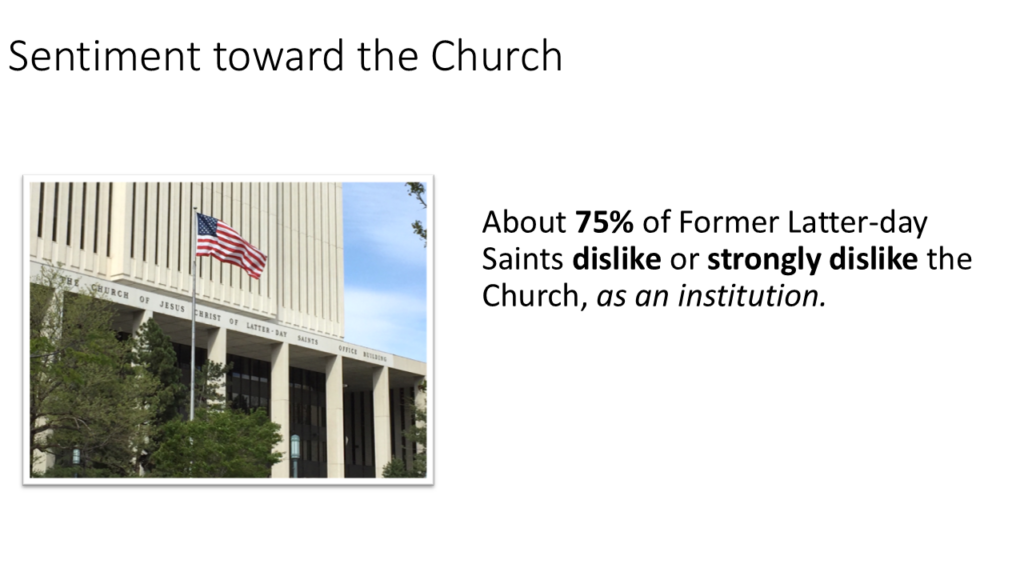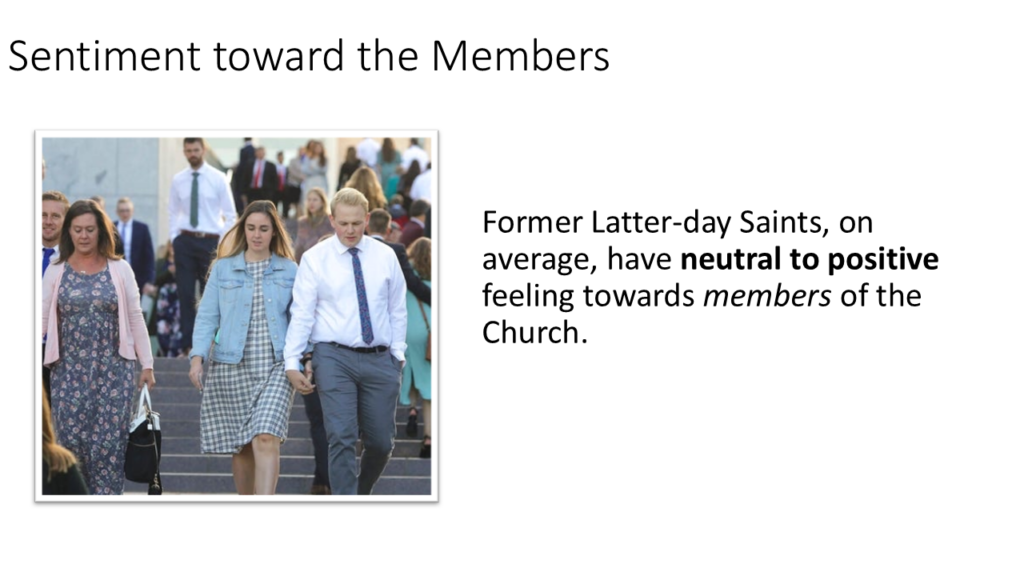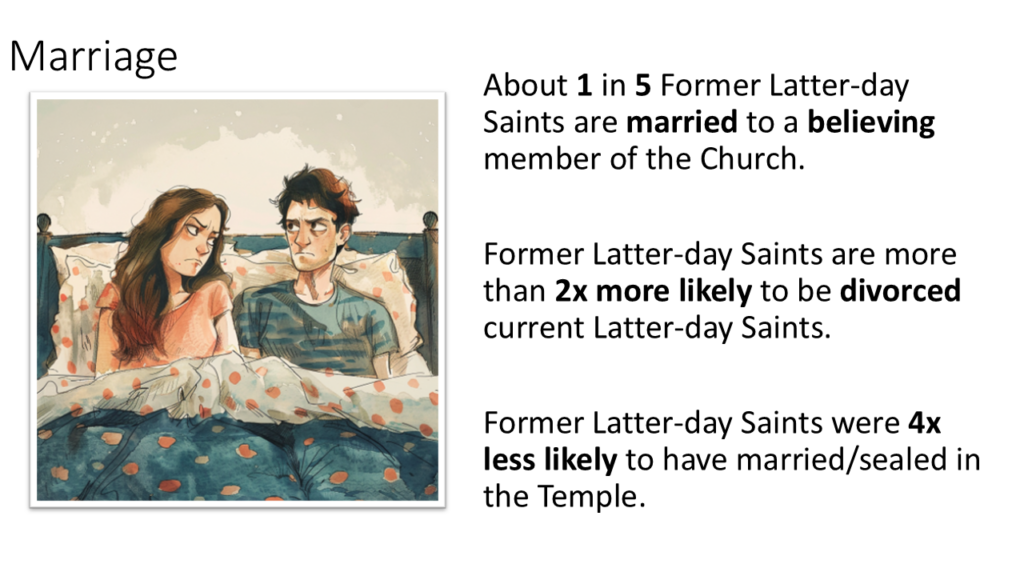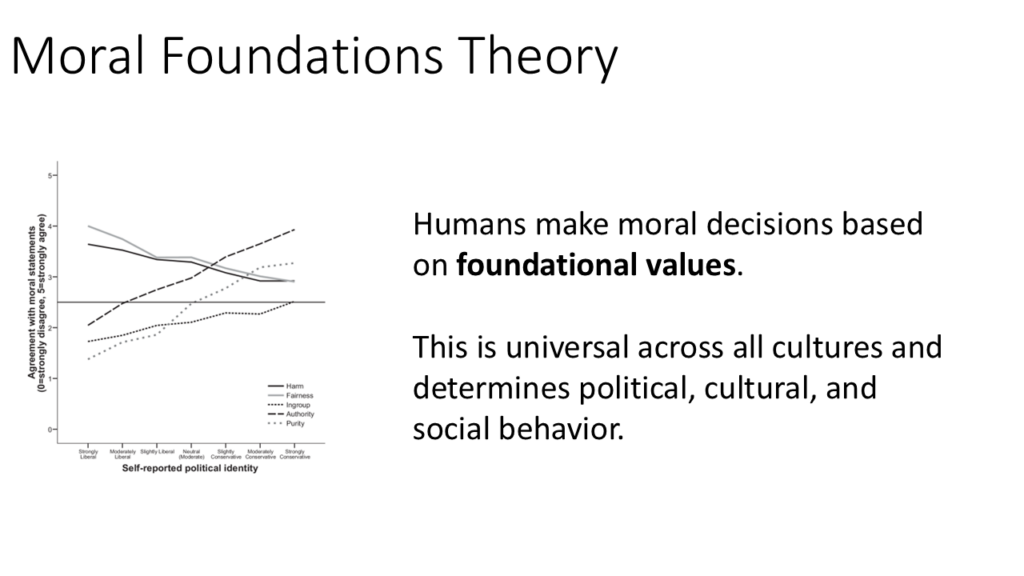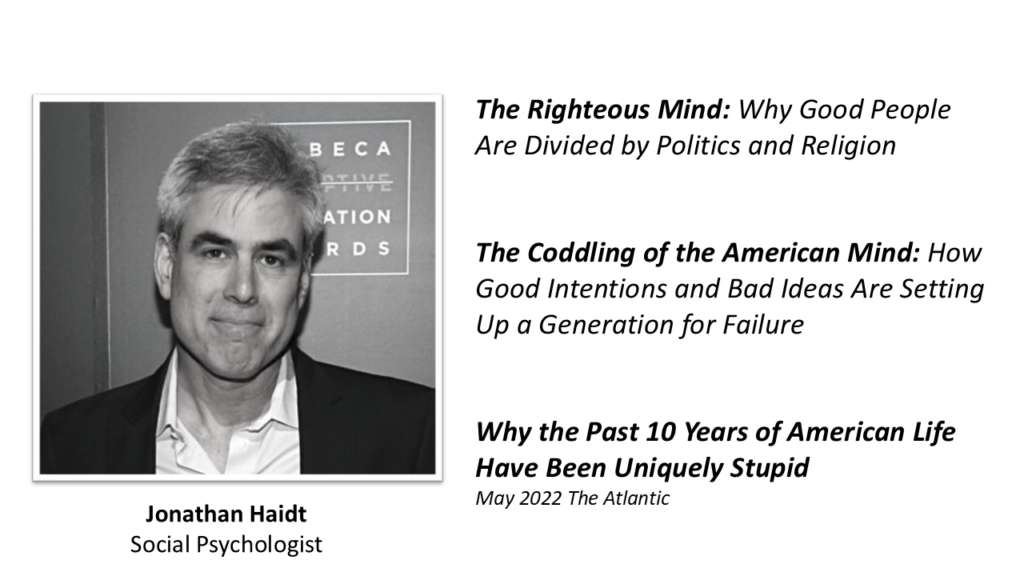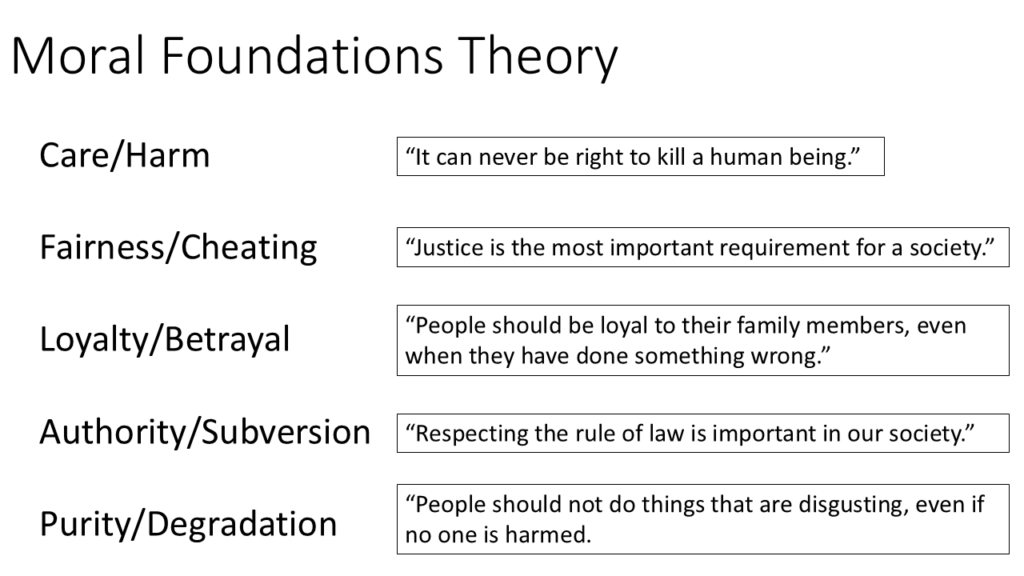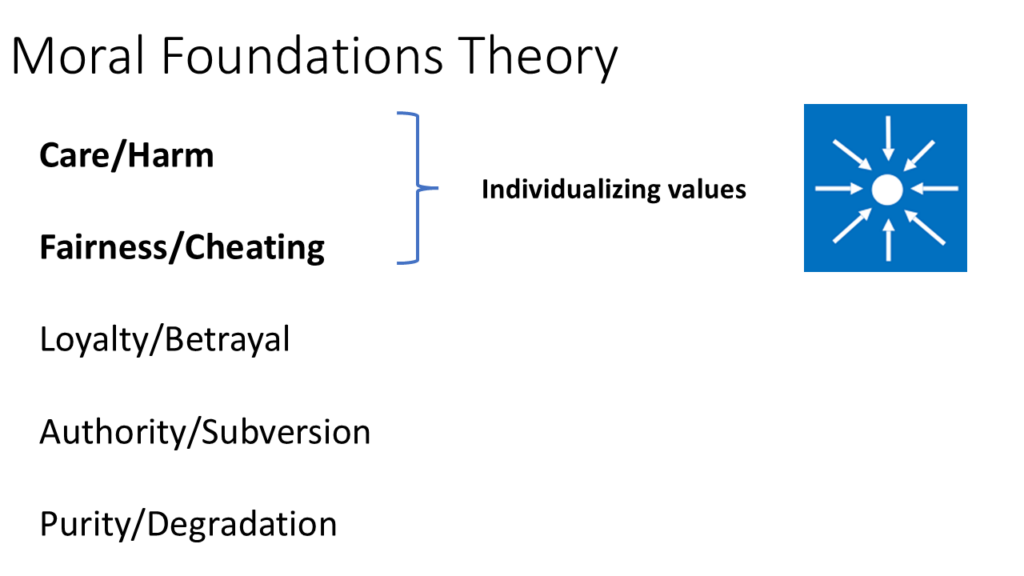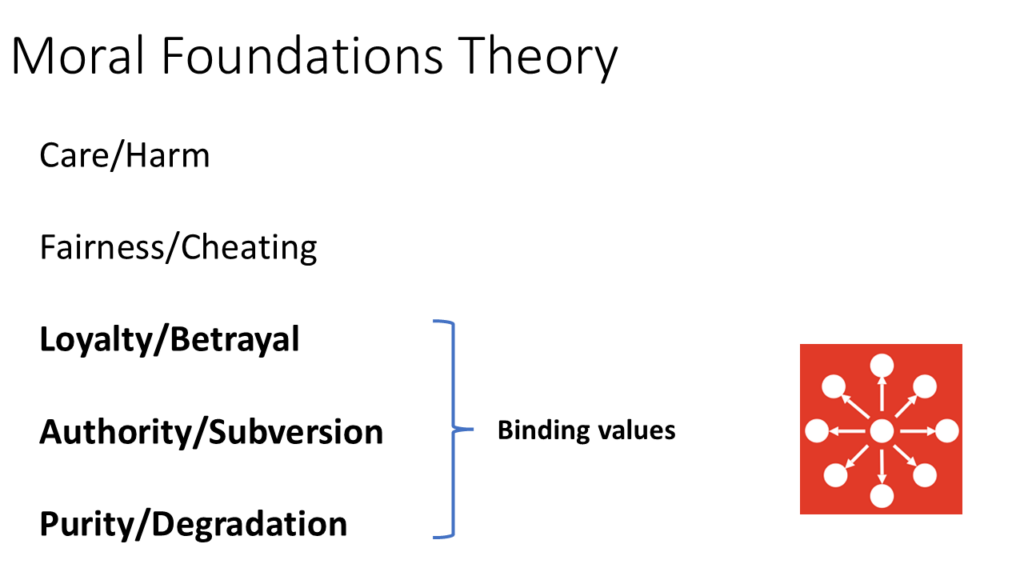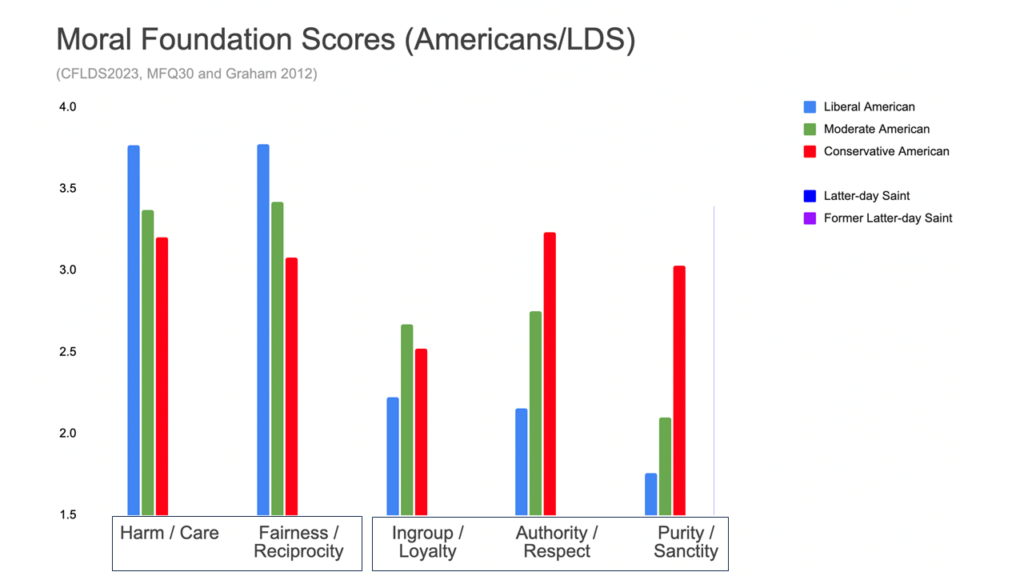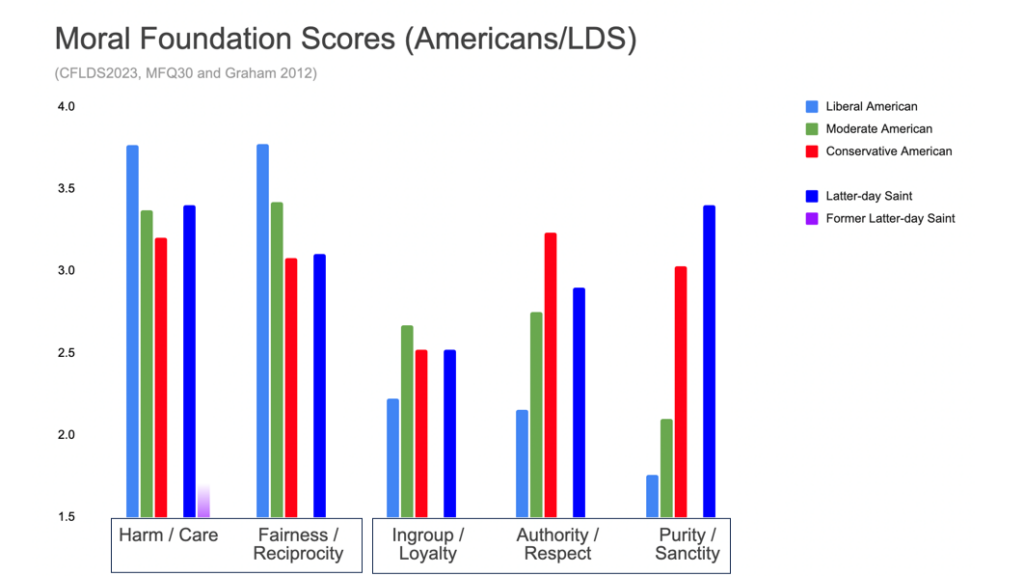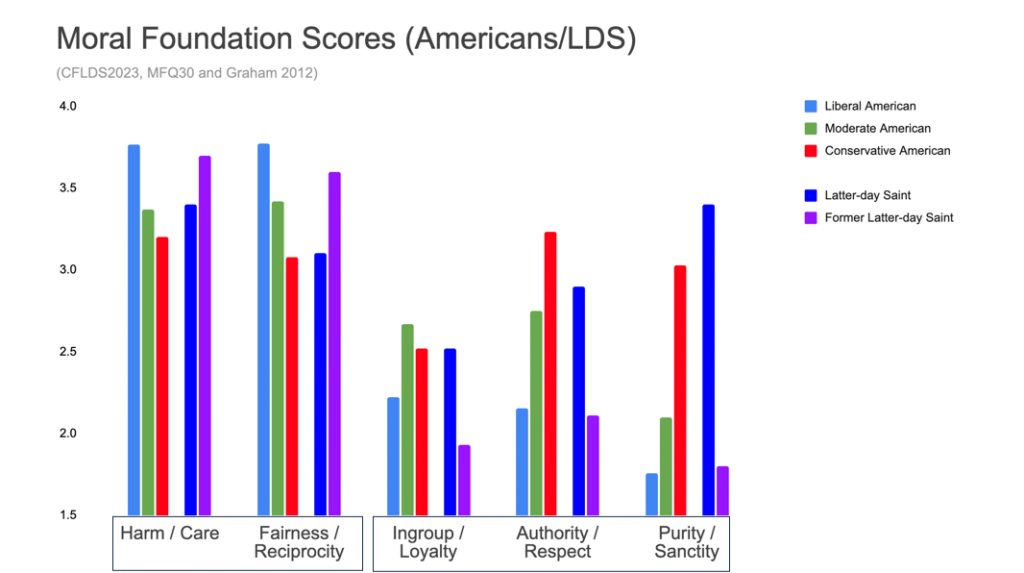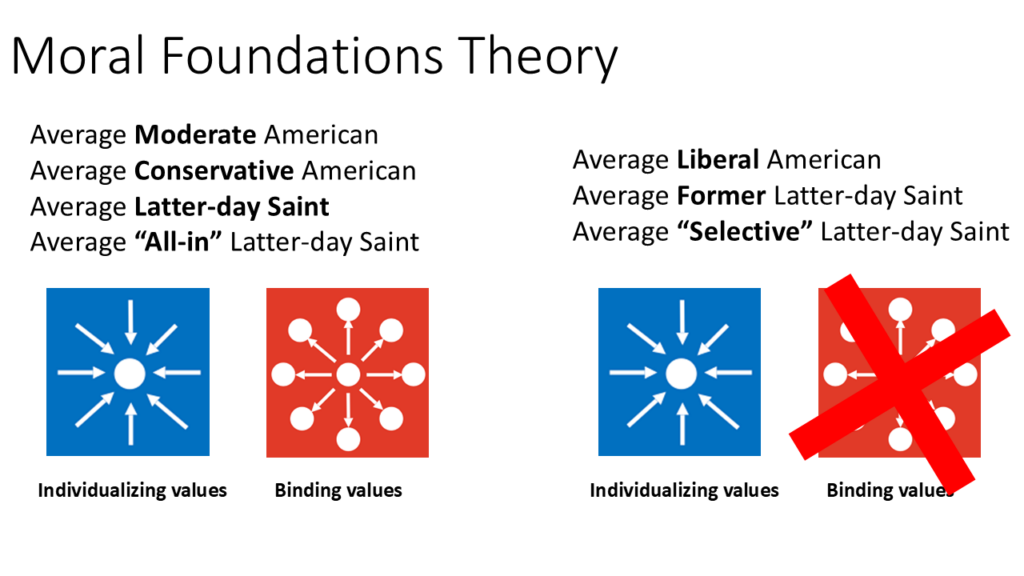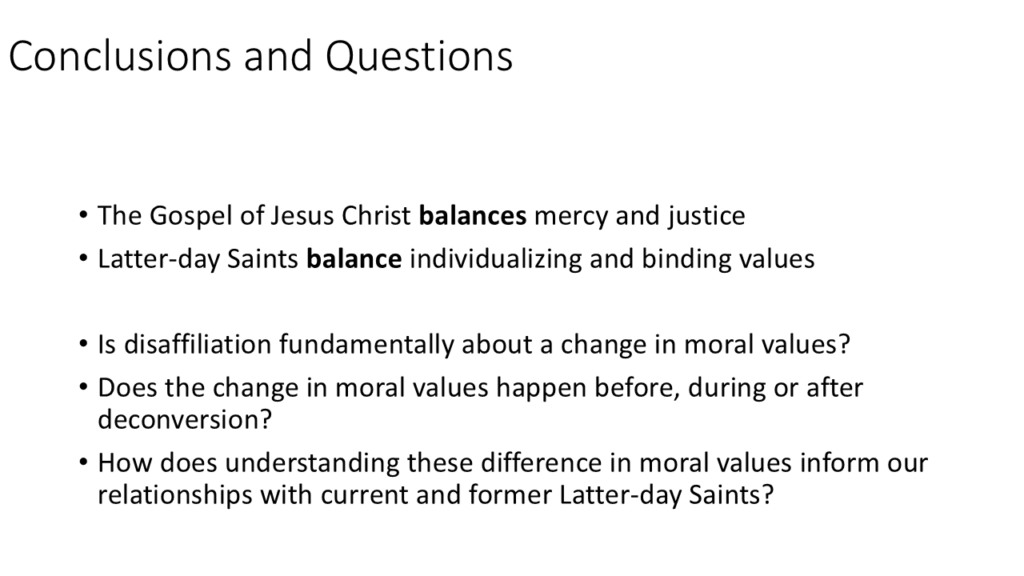Josh Coates presents a data-driven analysis of moral foundations among Latter-day Saints and former members, exploring how differences in values influence faith, disaffiliation, and community dynamics. Through engaging insights and practical applications, he encourages empathy, understanding, and love for all on their spiritual journey.
This talk was given at the 2024 FAIR Conference “FAIR and Valiant Voices”, on the campus of the American Heritage School in Salt Lake City, Utah, on August 9, 2024.

Josh Coates is a tech entrepreneur who currently serves as the Executive Director of the B.H. Roberts Foundation, a non-profit dedicated to advancing education and research about The Church of Jesus Christ of Latter-day Saints.
Transcript
Josh Coates:
Introduction to Moral Foundations and the BH Roberts Foundation
Okay, it’s fun to give a talk in a chapel that’s not a church. All right, let’s see here. Really quick, if you haven’t heard of the BH Roberts Foundation, it’s a foundation that was started just a few years ago. We work on education and research related to the Church of Jesus Christ of Latter-day Saints.
We’re a nonprofit, which means we lose money, but we think it’s worth it. We have several projects, lots of projects. I just want to share a few projects.
mormonr.org – An Apologetic Website Run By BH Roberts Foundation
Probably where we put most of our time and energy is into a website called mormonr.org. It’s effectively an apologetics website that deals with controversial issues in the Church in a simple question-and-answer format supported by a primary source database with, oh, 10 or 15,000 primary source records that you can see where the answers are actually coming from.
Recent Projects: LDS Bot and Church History Cards
Also, about a year ago, we developed LDS Bot, which is an artificial intelligence Latter-day Saint advocate. I guess it’s more knowledgeable and Christlike than all of you, myself included. It’s actually shocking how much it knows about the Church and how incredibly patient it is.
Since it’s been up, it’s probably had, I think the last time I checked, nearly a quarter million conversations with people that are all very faithful and very supportive of the Church. So it’s a lot of fun. If you haven’t played with it, it’s fun, especially it peaks on Sundays. Every Sunday we get the most users because people are quickly like, “Hey, can you write a talk about Mother’s Day?” And it’s very generous with its time.
Also, Church History Cards. It’s another project we just completed. We have completed the first of four volumes. You can buy them at the FAIR bookstore, or Deseret Book, or Amazon. They’re collector cards. You can play a card game with them, and they’re not face cards, so it’s okay. They have trivia on the back, so there’s trivia questions. If you think you’re an expert at Church history, it’s a lot of fun to test yourself. So anyway, this is just some of the projects we do at the BH Roberts Foundation.
Survey on Moral Foundations and Latter-Day Saints
Okay, so I’m going to talk about a survey that we did. This is another project from the foundation. Last year we did the largest survey that is representative of current and former Latter-day Saints in the United States.
So in 2011, Pew did a survey, which was quite large, and that was around the time Mitt Romney was running, and so everyone was curious about Latter-day Saints. So they did a national survey called “Mormons in America.” Jana Riess did a survey a few years later called “The Next Mormons,” and she had 1,600 people in her survey, and a number of them were interviewed, and she wrote a book on it.
Then we did our survey, which has 3,800 people in it. This is a representative survey, which is really important to understand because anyone can just post a link to survey questions on Facebook and share it with different Facebook groups and get thousands and thousands of responses, but they’re not representative. They’re not statistically valuable at all. They might be fun, but doing representative survey work is expensive and time-consuming. It’s a lot of hard work, which is why you don’t see it very often. But again, that’s what we do—spend time and energy trying to learn more about our people, the Latter-day Saints.
Understanding Moral Foundations and Survey Scope
So it’s important to understand what the survey is and what it isn’t, and that’s what I’ll be sharing today—some results from that survey, most specifically moral foundations, which I’ll talk about in a minute. The data was collected from the Mormon Corridor via postcards. So we sent out 80,000 postcards to random addresses throughout what’s defined as the Mormon Corridor, and then we had a national Facebook advertising campaign.
So half the data comes from the Facebook campaign and the other half comes from the postcards. The Facebook campaign—the difference is you don’t go to your friend group and post the link. It’s a random distribution of Facebook users. So between these two types of random solicitations, we get representative data. And if you want to read a very technical, boring paper on the theory behind the survey, you can find that on the BH Roberts website.
Okay, so again, I want to clarify what the survey is and what it isn’t, so you understand what data you’re about to consume here. It’s current Latter-day Saints that wanted to take the survey. Okay, if you don’t want to take the survey, we don’t know what you believe. So this is data from people that said, “Hey, I think I’ll take a survey.” It’s also from former Latter-day Saints. If I didn’t mention, this is the largest representative survey of former Latter-day Saints that’s ever been taken, because they’re part of our community.
Contextualizing the Survey Results
I have no doubt that every single one of us has a friend or a family member or a loved one that has left the Church, and they’re an important part of our lives. So it’s important to understand more about what this group of people is like collectively. Current Latter-day Saints that didn’t want to take the survey and former Latter-day Saints that didn’t want to take the survey—we just don’t have their opinions.
So when you see this, I know this seems very elementary and obvious, but it’s important to emphasize that this is the best social science can do on understanding groups of people. Okay, so also this is a snapshot of 2023. This is not going 10 years back, or this is not a trend. This is just a snapshot in time. And this also does not include any international information. And as we know, I think more than half the Church is outside of the United States. So you have to understand this is a narrow slice that we’re looking into.
Introducing Moral Foundations in Two Types of Latter-Day Saints
All right, first we’re going to cover a few items about the current Latter-day Saints. And again, this is not supposed to be a summary of the entire survey data. This is just a very narrow set, specifically about moral foundations. But to give context to that, I wanted to share that we discovered there are two types of Latter-day Saints.
We did what was called the K-means cluster analysis, which basically, we used a bunch of math and said, “Here’s a whole bunch of data. Algorithmically, can you see any patterns in groups?” And it spit back and said, “Yes, there are two groups here.” And the grouping is based on their beliefs, and I’ll share with you some details about that in a moment.
What we discovered is that about 81% of Latter-day Saints, we called them the All-In Latter-day Saints, and then 19% are what we call the Selective Latter-day Saints. And I’ll share with you kind of how these determinations were made. They’re not subjective. We didn’t just pick and choose. Again, this is an algorithmic process that’s well understood in the social sciences to classify groups of people based on data.
Diversity in Belief and Practice
So I’ll share with you a little bit about the beliefs and practices that separate these two groups. And when I say separate, it’s important: the person next to you could be in one group, and the person on the other side could be in another group. These are the people that are in the pews on Sunday. So these are our people. But again, it’s good to understand that there are different ways of thinking about the gospel.
Moral Foundations and Differences Between “All-In” and “Selective” Latter-Day Saints
- Church activity: ALL-IN say, “Hey, we go every week.” The SELECTIVE are a little less active.
- Prayer: once a day for the ALL-IN, several times per week for the SELECTIVE.
- Believes that the Church should solemnize same-sex marriage: that’s pretty much a “no” for the ALL-IN folks. The SELECTIVE are like, “Well, maybe.”
- Knows God exists: the ALL-IN 86%.
Gosh, I wish that was higher, but it’s pretty good. It’s significantly higher than the national average. For the SELECTIVE Saints, only a third know God exists. Now if you ask them, “Well, do you believe God exists?” you get different data. More people are willing to say that, but this is “know God exists.”
- Believes the Church should ordain women: the ALL-IN, no. SELECTIVE, yeah, we kind of think maybe that’s something that should happen.
- Reads the scriptures: several times per week for the ALL-IN. The SELECTIVE, almost once a week.
Further Belief and Practice Comparisons
- Pays a full tithing: 94% of ALL-IN say they pay a full tithing, whereas SELECTIVE it’s significantly less.
- Always wears temple garments: 97% of ALL-IN are wearing temple garments. SELECTIVE, it’s only 45%.
A few more bits of data here:
- Attends the temple, the ALL-IN more than several times per year, whereas the SELECTIVE, less than once or twice per year.
- Believes the Book of Mormon is literal history: 98% believe that in the ALL-IN category, whereas only 31% of SELECTIVE, so they’ll believe that it’s more allegorical.
- Believes historical plural marriage was a mistake: ALL-IN say, “Well, no, somewhat no.” SELECTIVE are like, “Yeah, no, that was a mistake.”
- Believes the historical priesthood ban for Black Saints was uninspired: ALL-IN are neutral on this. They’re like, “I’m just going to go with the neutral answer.” The SELECTIVE say, “Yes, absolutely, it was a mistake. It was uninspired.”
- Believes Joseph Smith saw God: strong “yes” on the ALL-IN. Neutral to somewhat “no” on the SELECTIVE.
- The president of the Church is God’s representative: ALL-IN strong “yes.” SELECTIVE, neutral.
Moral Foundations and Additional Insights on Belief and Former Members
So that’s the data. And then I’m going to talk about the moral foundations based on these two different groups. I think it’s very, very important to remind everyone that SELECTIVE Saints are not “bad” Mormons, and ALL-IN are not “good” Mormons. These are all members of the Church. They’re all our brothers and sisters.
And we don’t have any data about if people spend time in the ALL-IN group and migrate to the SELECTIVE group or vice versa. We don’t have a lot more information except for based on beliefs and practices, this is what it looks like.
Key Differences Among Former Latter-Day Saints
Former Latter-day Saints—we talked about Latter-day Saints; I’m going to talk real quick about some data points on former Latter-day Saints.
They are, for the most part, demographically similar to Latter-day Saints. There’s a few key differences, but they’re—a lot of people say, “Well, they’ve got to be way younger, right?” They’re pretty similar, a little bit younger, much more diverse in a few key areas.
Belief in God
Belief in God: almost half of former Latter-day Saints do not believe in God or are unsure and don’t think that there’s any way to find out if there is a God, but a third of them do believe.
So a lot of times we hear, “Well, if you’re an ex-Mormon, you’re an atheist.” That’s not an unfair characterization or generalization, but it’s important to understand that a significant number of them, a third, still believe in God. Right? And I think that’s really great.
What About Marriage?
Marriage: this is really interesting. We got a lot of data on marriage. We’ll actually be publishing a paper in BYU Studies about the divorce rate and how that relates to temple marriages. Really fascinating data on that.
About one in five former Latter-day Saints are married to a believing member of the Church. Very challenging, very challenging, but that’s a significant number.
Former Latter-day Saints are more than twice as likely to be divorced, so there’s a high correlation. Again, we don’t have data on what role the Church played or the religion played in the divorce, but we just know that there’s a high correlation between divorce and leaving the Church.
And finally, former Latter-day Saints were four times less likely to have been married in the temple. So if you get married in the temple, if you get sealed in the temple, you are highly correlated with staying in the Church.
Introduction to Moral Foundations Theory and Latter-Day Saints
Let’s talk about Moral Foundations Theory really quick—so what it is. The idea behind this theory, it was developed about 20 years ago, is that humans make moral decisions based on foundational values, and this is universal across cultures and determines political, cultural, and social behaviors.
They’ve actually done moral foundations research, I think, in over 60 different countries, and it’s consistent that it has predictive power. It’s a really phenomenal theory that’s used to understand how people think and how they see the world.
studying the psychology of morality and moral emotions
Jonathan Haidt was one of the primary developers of this theory. He authored The Righteous Mind, The Coddling of the American Mind, and one of my most favorite articles, Why the Past 10 Years of American Life Have Been Uniquely Stupid. It’s a good article, if you haven’t read it. A little depressing, but okay.
The Five Values of Moral Foundations and Latter-Day Saints
Moral Foundations Theory—basically, in the classic MFT model, there’s five different values:
- Care or harm—an example would be, “It can never be right to kill a human being,” and how you feel about that is how you determine your care/harm score.
- Fairness or cheating: “Justice is the most important requirement for a society.”
Again, these are example statements; there’s lots of statements, but these are just examples to give you an idea of how Moral Foundations thinks about these monikers.
3. Here, loyalty and betrayal: “People should be loyal to their family members even when they’ve done something wrong.”
4. Authority and subversion: “Respecting the rule of law is important in our society.” And finally,
5. Purity and degradation: “People should not do things that are disgusting even if no one is harmed.”
So, these are examples of how people think about moral foundations.
Political Views and MFT
Okay, let’s look at some data here. So, here you see blue, and that’s a liberal American, someone who identifies themselves as being a liberal political American. Green is moderate, and red is conservative.
And you see, on the right here, the harm and care score, the fairness and reciprocity score—that’s the individualizing values. Liberals tend to be very, very high on those. And you see the community ones: loyalty, authority, purity—they’re very, very low. And the conservatives, the reds, tend to be sort of middle across the board across all of those—some a little higher, some a little lower. And moderates are in between generally.
Moral Foundations and Latter-Day Saints
Okay, right there, that blue—that’s Latter-day Saints. So they’re coming up here; you can see that they’re similar to moderate Americans in some ways. Here you see in-group and loyalty. There’s authority and respect, but we’re kind of off the charts on purity, which is good, right? I would be sad if that wasn’t the case.
Comparing Moral Foundations in Former Latter-Day Saints
Now we’ll look at former Latter-day Saints. Former Latter-day Saints are very high on harm and care. It’s really important to them. What that means is, how you understand this is, if something is harmful, they’re like, “Oh my gosh, that is bad.” Right? It doesn’t matter what caused the harm necessarily, but if someone is hurt or sad, that’s bad. Whatever it is, we need to stop that.
Fairness: very high. We need to always be fair. But if you look at the binding values — the purple there, the former Latter-day Saints — loyalty: they’re quite low. In fact, they’re lower than any other group. Authority and respect: quite low, very similar to liberal Americans. And then on purity and sanctity, they’re also quite low.
So, you see a pattern, right? Former Latter-day Saints align very closely with self-identified liberal Americans.
Latter-day Saint Moral Foundation Scores
Let’s talk about Latter-day Saints. This kind of double clicks down into the Latter-day Saints group. The ALL-IN Latter-day Saints, right, here’s the green. The SELECTIVE Latter-Day Saints are significantly higher in harm and care, and the former Latter-day Saints are a little higher than that.
Key Differences in Moral Foundations Among LDS Groups
Again, ALL-IN Latter-day Saints on fairness—you see the SELECTIVEs, and then the former SELECTIVEs are pretty similar to former Latter-day Saints in their values and how they think about things, how they see the world. In-group and loyalty: there’s Latter-day Saints; the SELECTIVEs are relatively low on that. The former Latter-day Saints are even lower.
Authority and respect, and then purity and sanctity—what’s interesting here is the SELECTIVEs are not quite as high as the ALL-IN but they’re significantly higher (than former LDS). This is where there’s a big departure between a former Latter-day Saint and a SELECTIVE Latter-day Saint, and that departure is the concept of purity. So that makes me think that SELECTIVE Latter-day Saints are thinking, “You know what? God and sacredness is really important to me.” And that’s a big difference between them and, say, someone who’s left the Church. So that’s a really critical difference to understand.
A Summary
Okay, so this is kind of the summary here. The average moderate American, the average conservative American, the average Latter-day Saint, the average ALL-IN Latter-day Saint basically values individualizing values and binding values in a very similar sort of way.
Whereas the average liberal American, the average former Latter-day Saint, and the SELECTIVE Latter-day Saints don’t value the binding values very much at all, but they’re very, very high on individualizing values.
Applying Insights on Moral Foundations and Appreciating Different Perspectives
Okay, so lots of information, lots of data. What I hope happens from this is that we start to appreciate that people see the world differently than we do. Whether you’re a SELECTIVE Latter-day Saint here or an ALL-IN Latter-day Saint, everyone sees the world slightly different than each other.
What this information can help us do is to love our brothers and sisters in the Church and outside of the Church and appreciate that it’s not that, oh gosh, if they just understood what the Kinderhook plates really were. Trust me, they don’t care. They just—no one cares about the Kinderhook plates, and there’s a long list of things no one cares about. (You can find those on mormonr.org, by the way.) And people care about their fundamental values, whether they’re conscious about them or not.
The Role of Moral Foundations in Religious Belief for Latter-day Saints
If someone says, “Fairness is the most important thing in the world to me, and avoiding harm is the most important thing in the world to me,” a God that asks Abraham to sacrifice his son isn’t going to make sense to them. It just says, “Wow, that’s a messed-up God. I don’t really want to have anything to do with that God.”
“Gee, women don’t get the priesthood. That seems unfair.” Nothing you say to anyone is going to make them say, “Well, no, no, I now see that that’s fair.” The difference is understanding the complexities of mortality and the trade-offs behind all these values.
Any sane person, if you sit down and say, “Hey, what do you think about this concept of obeying the law?” or “What do you think about this concept of keeping things pure and good and clean on a one-on-one basis?” they’re going to say, “Yeah, yeah, no, that makes sense to me.”
But in the throes of the complexities of real life, we kind of go on autopilot. And what’s been built into our minds and our hearts is how we make decisions. And that’s how we need to interface with our brothers and sisters, is understanding that there are values that drive them.
Information’s good, data is great — but also understand that it’s the heart and the mind that we need to interface with. And this touches in a more quantified way on those important elements.
Questions on Disaffiliation and Changes in Moral Foundations
Okay, so the Gospel of Jesus Christ balances mercy and justice. Latter-day Saints balance individualizing and binding values.
Questions: Is disaffiliation fundamentally about a change in moral values? Right, we didn’t measure that. We didn’t measure, ‘hey, what happened?’ Were they always this imbalanced, with individualizing and binding values, and suddenly they realized it and decided to leave the Church? Or did they have a more balanced moral foundation, but then when they left the Church it got skewed?
Right, we don’t know the answer to that question. But there’s a significant difference between people in the Church and outside of the Church in these values. So that’s a fascinating question.
Does the change in moral values happen before, during, or after deconversion? We don’t know the answer to that question either.
So this is—oh, finally, last one. How does understanding these differences in moral values inform our relationship with current and former Latter-day Saints? Right, these are all exercises for the reader.
Final Thoughts on Moral Foundations: Loving All on Their Journey
So this is probably the least spiritual talk of the conference. But I think data is good. Good data is good; bad data is bad, right?
And I just want to conclude with God is good, the Church is true. We need to love our brothers and sisters, no matter where they are in their journey, whether they’re in the Church or they’re out of the Church. And this data can help us understand ourselves and also the people we love.
And I leave this with you in the name of Jesus Christ, amen.
No Q&A was offered for this presentation.
coming soon…
- Date Presented: August 9, 2024
- Duration: 26 minutes
- Event/Conference: 2024 FAIR Conference
- Topics Covered: Moral foundations, Latter-Day Saints, faith crises, disaffiliation, community values, individualizing values, binding values, Mormon cultural values, former Latter-Day Saints, religious belief, empathy and understanding, fairness and harm, purity and sanctity, authority and respect, loyalty and betrayal, church activity, temple marriage, divorce rates, apologetics, Mormon faith retention
Perceived Unfairness in Church Policies
The talk addresses concerns regarding perceived inequalities in the Church, such as women not being ordained to the priesthood and historical plural marriage.Faith Crises and Disaffiliation
Josh Coates discusses how differences in moral values, particularly fairness and harm, contribute to faith crises and disaffiliation among members and former members.Moral Complexity in Religious Teachings
The talk highlights how certain stories in scripture, like Abraham being asked to sacrifice Isaac, may conflict with modern views on fairness and harm, leading to misunderstandings of God’s nature.
The primary apologetic focus is on bridging understanding between current and former Latter-day Saints by:
- Presenting data-driven insights on moral foundations.
- Emphasizing empathy and love for those who disaffiliate.
- Encouraging members to focus on shared values rather than doctrinal disagreements.
This talk aims to foster greater compassion and understanding within the Church by addressing key moral differences and highlighting the importance of balancing mercy, justice, and community values.
Share this article
